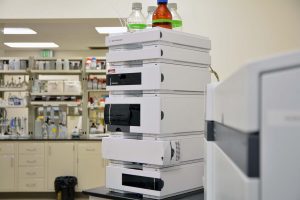
It can be hard to worry about contamination by a substance that regularly shows up in children’s vitamins. But selenium pollution via industrial waste can impair our waterways. The margin between “essential” and “toxic” levels of selenium is very slim, and even in small concentrations, selenium pollution is shown to have serious effects on fish and wildlife. In 2016, EPA recommendations under the Clean Air Act extended criteria to include selenium contamination in the food web, not just the water column, and future regulations could be even more stringent. Industrial and manufacturing facilities will need to treat wastewater streams for selenium prior to discharge, which means operators will be required to monitor selenium concentration to comply with regulations.
This is neither a simple nor an easy enterprise. It’s made particularly challenging by the fact that selenium comes in numerous different organic and inorganic species, and selection of remediation techniques and technology will vary depending on the species present. There is no simple “selenium pollution” — a water source could be contaminated with hydrogen selenide or selenium(IV), and that distinction is an important one when it comes to treating the contamination.
Speciated selenium measurement is a complex process requiring a combination of specialty instrumentation and human expertise. One issue of concern during the speciation process is the presence of interferences within the sample — threatening accuracy in measuring total selenium, even before any attempts at speciation take place.
“Selenium has different isotopes, which we monitor using ICP-MS (inductively coupled plasma mass spectrometry),” said Chaoyang Huang, an engineer and senior chemist at Southern Research. “Each species is subject to different polyatomic interferences from the water matrix. These are hard to isolate without a collision/reaction cell.”
 Southern Research (SR) was the first lab in the Southeast to break into speciated selenium measurement and has been offering it as a service to commercial clients since 2008. The past decade has given us numerous opportunities to invest in the people and technology necessary to perform it well. Our proprietary method couples HPLC (high-performance liquid chromatography) with an industry-leading Agilent 8800 Triple Quad ICP-MS to speciate and quantify even trace levels of selenium in contaminated water.
Southern Research (SR) was the first lab in the Southeast to break into speciated selenium measurement and has been offering it as a service to commercial clients since 2008. The past decade has given us numerous opportunities to invest in the people and technology necessary to perform it well. Our proprietary method couples HPLC (high-performance liquid chromatography) with an industry-leading Agilent 8800 Triple Quad ICP-MS to speciate and quantify even trace levels of selenium in contaminated water.
That past decade has also given us an opportunity to develop an expertise around the wastewater itself.
“Because we understand the wastewater matrix, SR can proactively minimize the impact of interferences on the final analysis results,” Huang said.
State-of-the-art quality control measures allow us to ensure accuracy in both the total selenium and the speciated selenium measurement so SR’s clients can understand the nature of the selenium contamination and select effective treatment solutions.
Treating selenium contamination is important both for the health of the environment and for the health of facilities facing government regulation and potential penalties. Selenium speciation is the first step in knowing what to treat and how to treat it. Partnered with an experienced, market-proven lab, heavy industry and wastewater treatment facilities can keep waterways fresh and regulators satisfied.
